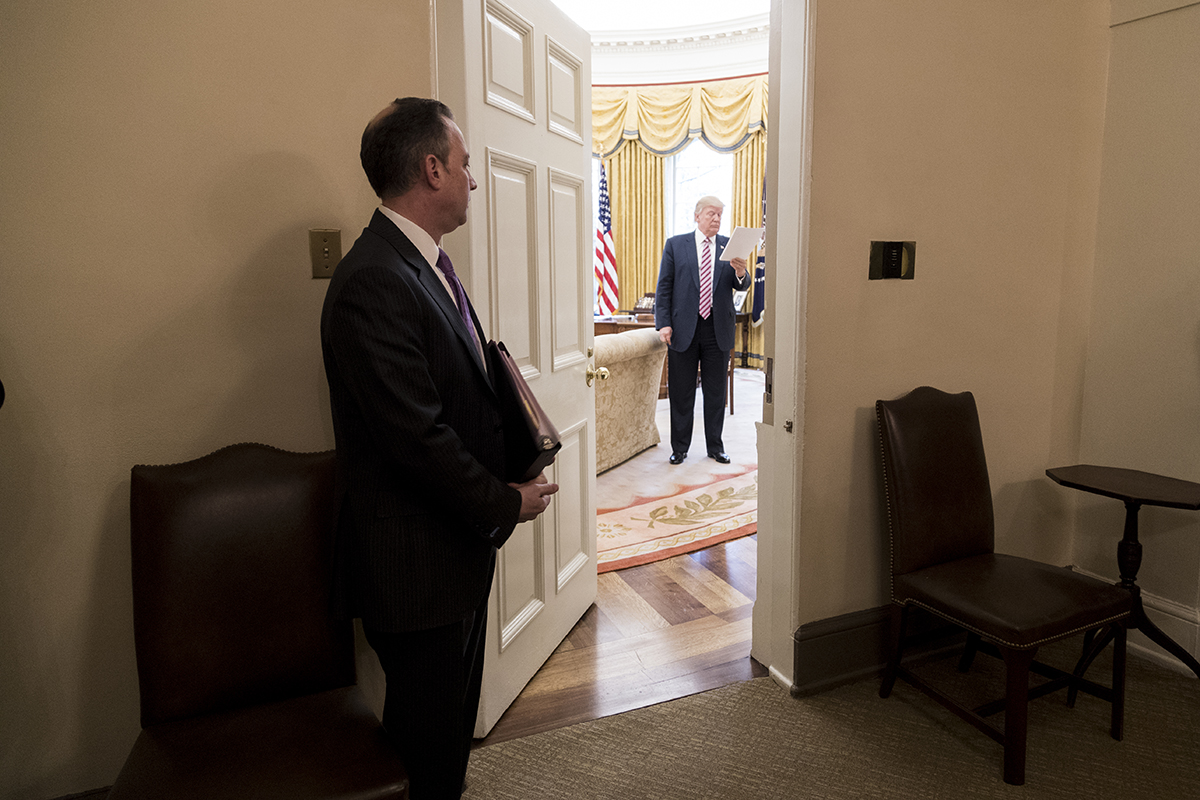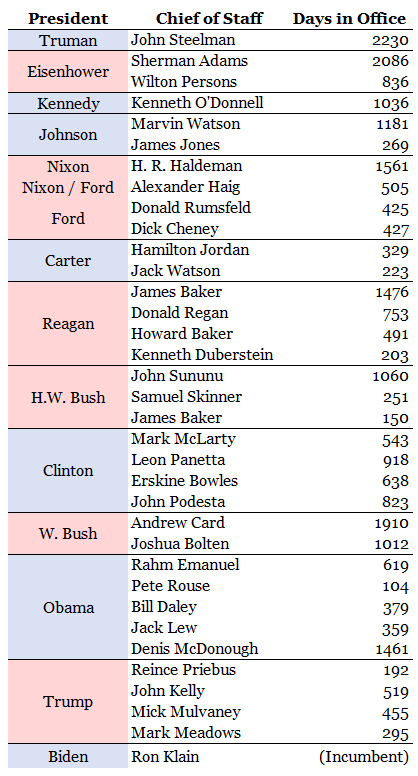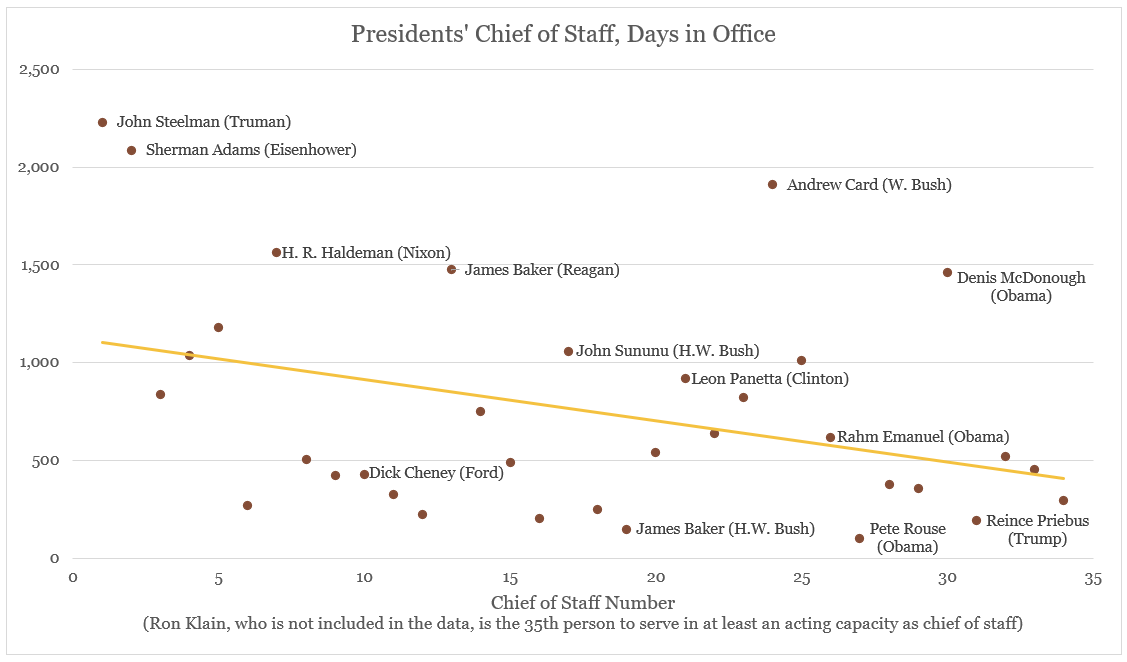
How Long Do White House Chiefs of Staff Tend to Last?
President Joe Biden’s Chief of Staff Ron Klain announced that he’ll be departing from the position in the near future. Just over two years into Biden’s first term, this is by far the largest shakeup of what’s been a remarkably stable administration. Thus far, not a single Biden cabinet secretary has given up their post, whereas the Trump administration which saw seven cabinet secretaries leave their post in his first two years (two of whom did not even make it a year). And while many of Trump’s cabinet members suffered nomination fights, the high-level positions in the Biden administration have avoided tumult.
But chief of staff turnover is a little different. Including acting chiefs, Trump had four chiefs of staff in just four years in office – the first of whom, Reince Priebus, only lasted 192 days. Obama had five over his eight years, the first of whom, Rahm Emanuel, lasted 619 days.

Since the position’s predecessor, the “Assistant to the President,” was created under Truman, 35 men (and not a single woman, or any non-white person for that matter) have served in the role in at least an acting capacity. Excluding Klain, on a per-president basis, that comes out to about 2.6 chiefs-of-staff per president; roughly 1.8 chiefs of staff per presidential term. On average, they last 756 days in office – a little over two years. So turnover in the position is pretty high, but not consistently so across each president. Some, like Trump, Obama, and Clinton, went through many even when accounting for their differing lengths of time in office; while some like Truman, Nixon, and George W. Bush stuck with theirs through at least an entire full term which included a reelection.
Looking only at each presidents’ first chief of staff, the shelf-life is a little higher – these average 1,097 days in office, a little over exactly three years.For the sake of this calculation, we include the 43 days that Alexander Haig served as Gerald Ford’s chief of staff after Richard Nixon resigned, and want to note that Kenneth O’Donnell, John F. Kennedy’s de facto chief of staff, presumably would have continued to serve were Kennedy not assassinated. Of note though is the disparity between Republican and Democratic presidents. Klain, notably, outlasted every other Democrat’s first chief of staff since the Johnson years even though he’s well below the average tenure of a first chief of staff (and chief of staff overall, though depending on when he officially steps down, he may pass the average). Whereas Trump was a dramatic outlier compared to every post-war Republican president other than Ford. Eisenhower, Nixon, Reagan, and both Bushes had a chief of staff that stuck around at least two years – and all but H.W. Bush and Ford kept their first chief of staff through their reelection. Of note, H.W. Bush, Ford, and Trump are also the only three post-war Republicans to lose in their bid for another term, so maybe the intra-administration turnover was emblematic of a larger problem? On that note, both presidents who were unable to hold on to their first chief of staff for more than a year (just Trump and Carter) lost reelection.
On average, chief of staffs are sticking around for shorter and shorter amounts of time. The longest-serving chief of staff, Truman’s John Steelman, was also the first; whereas Obama and Trump each had two who didn’t even make it a year. Klain will have outperformed the trendline significantly by simply surviving only two years in the job.

So, it may seem like a chief of staff departing the role is a big deal – and it is, as it offers an administration an opportunity to pivot – the fact that this is happening, even in an incredibly stable administration, is probably not something to spill a lot of ink over. It’s a grueling job, occasionally likened to an American equivalent of a prime minister, one that blessed its officeholders with – among other maladies – a heart attack and a criminal record. It may be a while before we see another chief of staff who sticks it out through the six years that Steelman did. Two years is a good run, and probably about as long as the next one will last too.